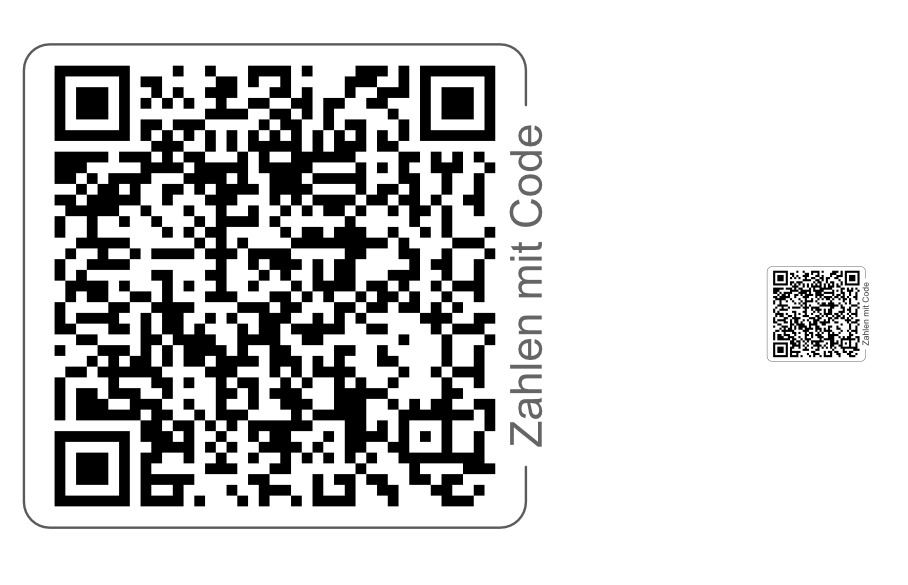All Activity
- Past hour
-
Publisher 2.5.0.2415 initial dialog bug
anto replied to anto's topic in Other New Bugs and Issues in the Betas
I've done this once before, when the Line Width Tool didn't work. I just tried to reset next settings but nothing help. There is no nothing. -
Pšenda started following Style transfer between two images
-

Style transfer between two images
Pšenda replied to davide445's topic in Affinity on Desktop Questions (macOS and Windows)
It depends on how you created the image edit, but give it a try Copy and Paste Style. -
davide445 started following Style transfer between two images
-
I have the two attached images and want to transfer illumination, color palette etc to from the soldatino to the ballerina, so the second is more similar (coming from different pictures). I have tried "AI" online tools to do this and also transport the painintg style, but seems not woking well, so just trying to achieve the best I can on AP. Tried using LUT transfer, with almost no difference, using swatches and color grades give a very wrong result. Wanted to kindly ask if there is something else might sense trying.
-
NotMyFault started following Why can't I paint in black area when alpha channel is disabled? and Lost images
-

Lost images
NotMyFault replied to Jim Cowell's topic in Affinity on Desktop Questions (macOS and Windows)
Try to inspect the iCloud storage with either finder, or Safari (www.iCloud.com). There you can search for specific file types and date ranges, or sort the files on date created / date added. Icloud sync can get broken, and may have stopped. You may have activated to keep them in cloud only to save storage on you Mac local drive. Or you may have deleted old files in iCloud on another device (iPhone, iPad). This can work globally and delete the files on all devices using the same iCloud account. When using Safari, you can inspect the „deleted“ folder. -
Try to only show the alpha channel, and if the black area is white (you can paint) or black (you cannot paint because you disabled the alpha channel.). Affinity will enforce black for all color channels whenever alpha is black / zero. You immediately spot this when deactivating alpha channel. All transparent pixel become black (while normally shown white or checkered board).
-
 davide445 reacted to a post in a topic:
Refine x128 upscaled image
davide445 reacted to a post in a topic:
Refine x128 upscaled image
-
 davide445 reacted to a post in a topic:
Refine x128 upscaled image
davide445 reacted to a post in a topic:
Refine x128 upscaled image
-
Refine x128 upscaled image
davide445 replied to davide445's topic in Affinity on Desktop Questions (macOS and Windows)
In the end I decided to just change the image, this one was just too coarse. The problem remains for every new figure extracted from a bigger image, so thanks for the good ideas. -
It has been reported elsewhere that on Mac, any change to the Variation axes immediately causes the Font Manager to list the font as Missing. Possibly because the font name is changed. Perhaps what you're reporting is related to this. For example, perhaps the activation request is made, but using that changed font name?
- Today
-

"Default preset" for grid
AffinityMakesMeWonder replied to Ash's topic in 2.5 Beta New Features and Improvements
Why not implement Grid Presets on iPas as well? -
 GarryP reacted to a post in a topic:
Beta Leak: Line Width tool on YouTube
GarryP reacted to a post in a topic:
Beta Leak: Line Width tool on YouTube
-
 Alfred reacted to a post in a topic:
Hyphenation for the Finnish language?
Alfred reacted to a post in a topic:
Hyphenation for the Finnish language?
-
Hyphenation for the Finnish language?
KMA replied to KMA's topic in Affinity on Desktop Questions (macOS and Windows)
Thank you all for the good instructions, now I can continue the folding work. -
 fernand0n reacted to a post in a topic:
QR Code Tool
fernand0n reacted to a post in a topic:
QR Code Tool
-
Hyphenation for the Finnish language?
KMA replied to KMA's topic in Affinity on Desktop Questions (macOS and Windows)
-
Floor started following Missing variable fonts are not requested on macOS
-
Affinity Designer/Publisher/Photo Beta 2.5.0 (2415) When opening a document which uses fonts Affinity Designer tries to load the fonts to display them. The fonts may be missing (deactivated), in that case macOS implicitly sends a font request to external applications, such that font managers can automatically provide the missing fonts if they're available. This works correctly for static fonts and variable fonts that use one of the named presets. For example when using the variable RobotoFlex-Regular in a document (without changing any variable parameters) Affinity will correctly request RobotoFlex-Regular on reopen. If any of the parameters of a variable font is changed, such that it doesn't match with any of the named instances, then the Affinity apps do not send a font request. This means that font managers do not have the opportunity to auto activate the missing variable fonts. For example: Activate variable Roboto Flex in a font manager Open a blank document in Affinity Designer 2.5.0 Add a text block and use Roboto Flex Adjust the weight axis to 415 (this doesn't match with any named instance) Save and close the document Deactivate the variable Roboto Flex in a font manager Reopen the document => Font is missing (expected), but also no font request is sent so the font cannot be auto activated by macOS It's a bit hard to verify/reproduce this, as the font request happens behind the scenes in macOS and you need a font manager to capture this request. Font requests are typically sent automatically when a font is loaded using an NSFontDescriptor. For example loading a font using a descriptor with a font name NSFontDescriptor(fontAttributes: [ .name: "RobotoFlex-Regular" ]) will look for any available font with that name. It seems like Affinity loads a font differently when axes are adjusted. (Note that this only applies to missing, deactivated fonts. Activated fonts are correctly loaded on document reopen.) If any additional information is needed I'm happy to help.
-
 Komatös reacted to a post in a topic:
Beta Leak: Line Width tool on YouTube
Komatös reacted to a post in a topic:
Beta Leak: Line Width tool on YouTube
-
On the right side: "Protect Alpha". I see, it's not ticked. So what about the colour you are painting with? Black on black will of course not cause visible results. I checked it with on my PC, and it worked corrctly. Deactivated Alpha only doesn't cause this problem. Another idea: is there possibly a hidden selection somewhere on that document? In that case, you can only paint inside the selection.
-
rawerika joined the community
-
That's it, thanks a lot for the help.
-
 Patrick Connor reacted to a post in a topic:
QR Code Tool
Patrick Connor reacted to a post in a topic:
QR Code Tool
-

Publisher 2.5.0.2415 initial dialog bug
walt.farrell replied to anto's topic in Other New Bugs and Issues in the Betas
Thanks. I have no idea what might have happened to you. Was it like that from the beginning of the 2.5 beta? Or like that in the 2.4 beta? Perhaps you should hold Ctrl while starting the application and perform a Reset (just the User Data, probably, not the rest). -
 StuartRc reacted to a post in a topic:
Custom guitar art
StuartRc reacted to a post in a topic:
Custom guitar art
-
Hi Updating Character Style Panel using Variable Font Slider Axis I added 3 character styles (DM SANS) with the character panel. Then changed the weight values using the variable slider. This updates the Character Font in the Character Panel. But I don't seem to be able to update the character from the Context Menu (Quick update!). The icon and dropdown have registered a change (+) and Highlight but when clicked is ignored
-
 AvdB-Netherlands reacted to a post in a topic:
Vergissingen in spelling?
AvdB-Netherlands reacted to a post in a topic:
Vergissingen in spelling?
-

AI please
Becoming Jerome replied to Chrisii's topic in Feedback for the Affinity V2 Suite of Products
Not helpful... You can train your own models (Loras) with your own creations, then modify pose, expression, ambiance, you may learn from local AI Stable Diffusion instead of spit on it and shout "Vade Retro Satanas". -
App version: APub 2.4.2 OS: Windows 10 PRO 22H2 Create Drop Caps. Assign a character style to them using the Style drop-down list. Make some visible changes in the assigned character style. The Drop Caps won't change. The only way to update them to reflect the changes made is to deselect the character style and select it again. Whats's expected: While you make changes in the character style they should be reflected live in Drop Caps, as with paragraph styles, or at least after committing them. This bug is very similar to AF-1012 which affects bulleted and numbered lists.
-
Alfred started following Lost images
-
Lost images
Alfred replied to Jim Cowell's topic in Affinity on Desktop Questions (macOS and Windows)
Your screenshot shows files stored in your Affinity Photo folder on iCloud, but it also shows that you have very many files stored there. How do you square that with the first sentence of your original post? -
You will need to either: Perform a Spell Check operation and Learn or Ignore those words; or Apply Character Text Styles that specify a Language/Spelling of None; or If the word is actually properly spelled in some language other than your User Interface language, Apply a Character Text Style that specifies the proper Language/Spelling, so the correct dictionary is used. Or some combination of those. "J.G" and "H.V" could be Ignored or Learned (#1) or set to None (#2). But "linger" seems like a legitimate word whose Language is simply set incorrectly.
-
 Alfred reacted to a post in a topic:
QR Code Tool
Alfred reacted to a post in a topic:
QR Code Tool
-
Feedback/Usability wise, it would be nice to have an option to easily create a border with some text around the QR-Code. Here is an example of such a result; Of course the user could create such things manually but it is time consuming.
-
Publisher 2.5.0.2415 initial dialog bug
anto replied to anto's topic in Other New Bugs and Issues in the Betas
I use exe version 2024-04-28 13-41-09.mp4 -

Publisher 2.5.0.2415 initial dialog bug
walt.farrell replied to anto's topic in Other New Bugs and Issues in the Betas
Mine looks fine using the EXE installer, @anto. I will check the MSIX later, but I haven't noticed anything like that so far. -
RobinT50 joined the community
-
Thank you, I'll try it.









